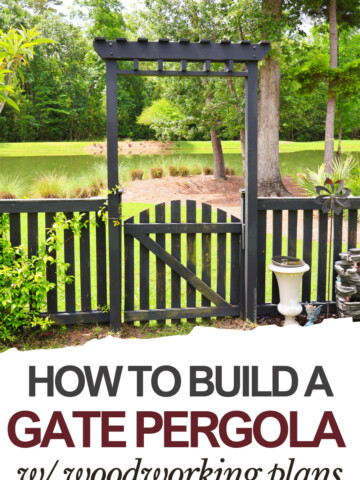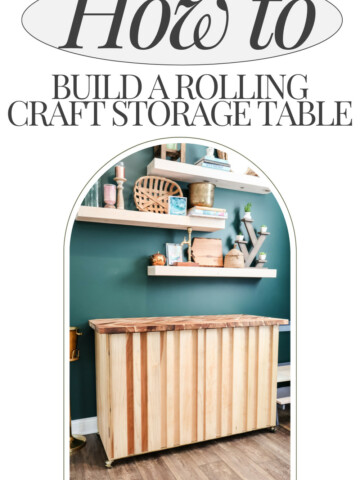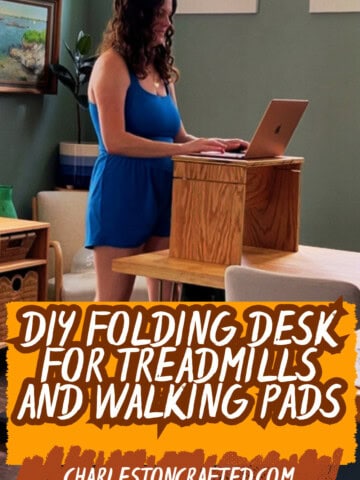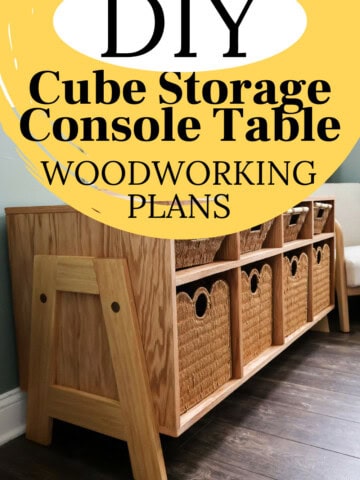Need to patch damaged wood? Let's compare the make up and functionality of Wood Putty vs wood filler to see which is best for your patch job!
We've all been there – you have a beautiful wooden piece of furniture, but it gets damaged. Whether this is a new build that you are working on, or a piece of furniture that you have loved for a while, it could be very disappointing.
But, luckily, wood furniture is fairly easy to repair. Depending on the exact damage, you can use either wood putty or wood filler to fill in the damaged area and repair your wood furniture.
Today we are going to compare wood putty and wood filler to help you decide which is the proper patching material to use on your wood project. Let's dive in!
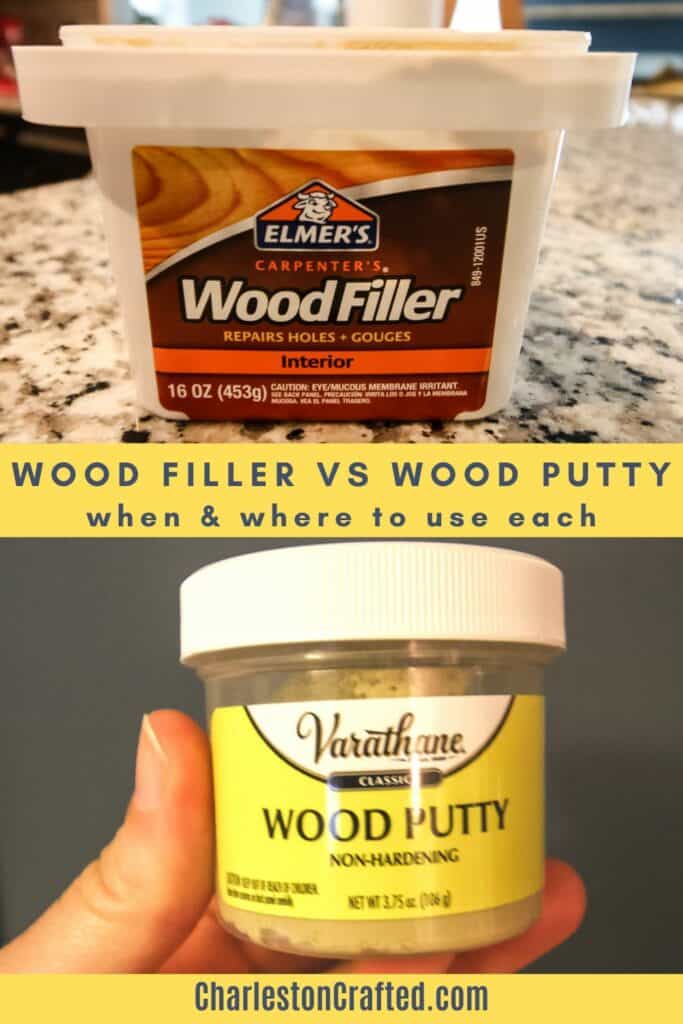
Understanding Wood Putty
Wood putty is a patching product designed for wood surfaces. It is made from wood dust mixed with a binder, usually solvent-based like linseed oil or laquer.
Generally, wood putty is thicker and denser compared to wood filler. This means that wood putty is much less likely to shrink or crack - a huge benefit over wood filler.
Wood putty does not typically fully harden. This is what gives it slight flexibility - but also means that it cannot be easily or neatly sanded. If you want to sand something smooth, you want wood filler.
Wood putty is designed to be used for minor repairs, like filling small nail holes, hairline cracks, or surface blemishes on wood surfaces.
Wood putty is designed for interior use. It also is not stainable and instead comes pre-colored in a variety of common wood tones.
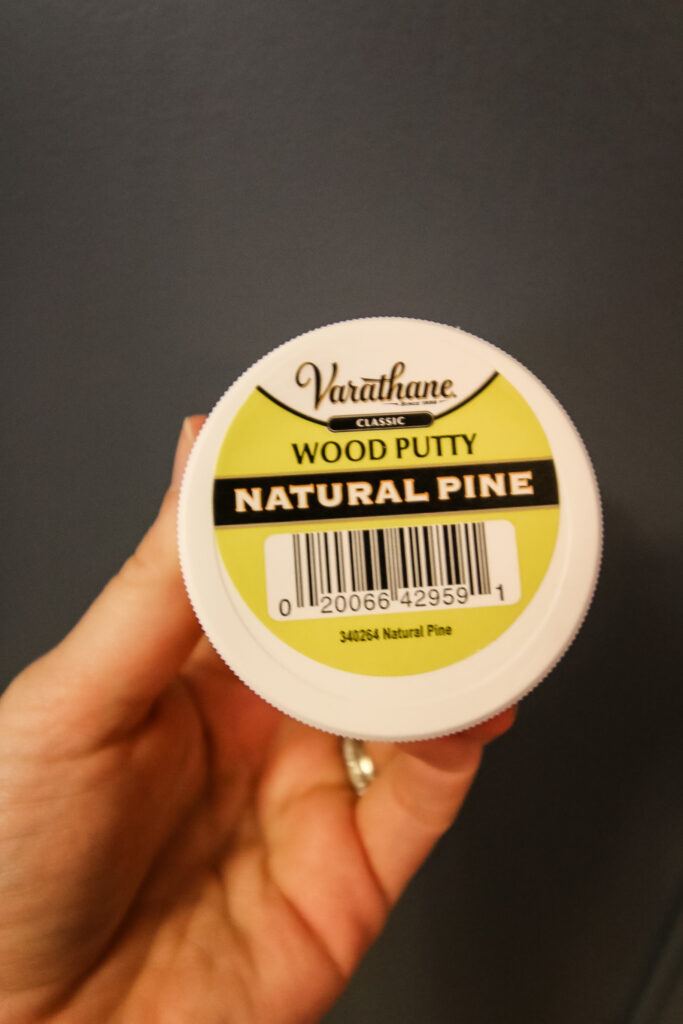
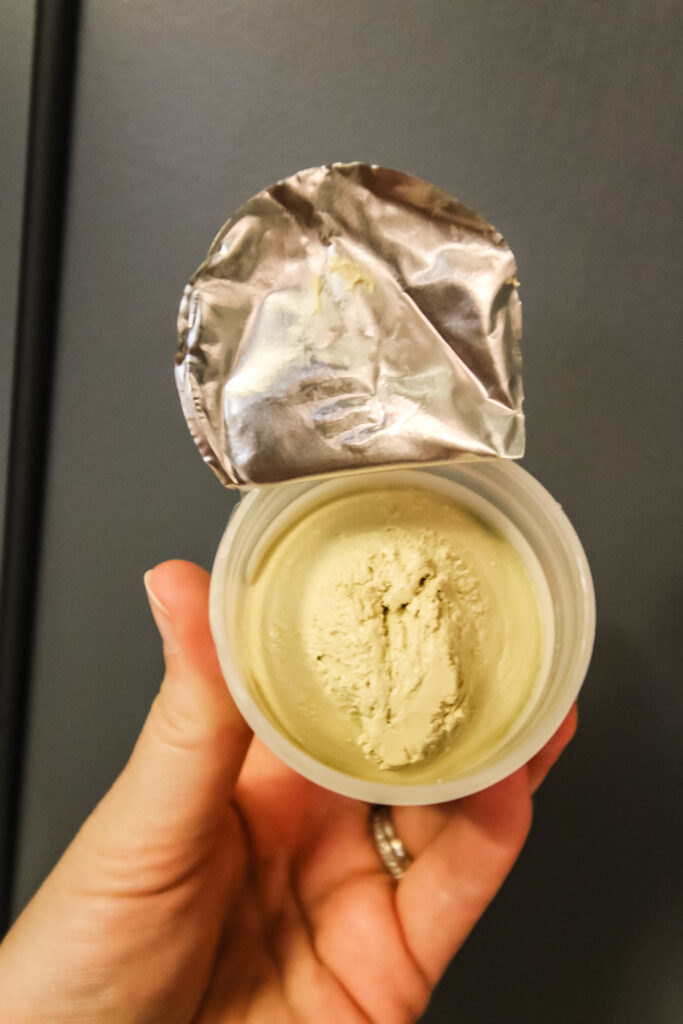
Benefits of Wood Putty
- Ready-to-go - no mixing required and comes pre-dyed to match a variety of wood species.
- Dough-like consistency makes it easy to mold and shape with your fingers or a putty knife.
Types of Wood Putty
- Water-Based Wood Putty: Environmentally friendly, easy to clean up with water, dries relatively quickly, not as strong and best for small repairs.
- Solvent-Based Wood Putty: stronger, but stinky. Longer dry time. Often can be used indoors or outdoors.
- Non-Hardening Wood Putty: Remains flexible and pliable even after drying, accommodating wood movement. Best for flexible areas such as joints or seams.
Wood Putty Dry + Cure Time
- Wood putty usually has a shorter drying time compared to wood filler.
- Exact dry + cure time will vary by brand - always refer to the label for specifics.
- In most cases, wood putty dries to the touch within 15 to 30 minutes after application.
- Environmental factors including temperature, humidity, and the thickness of the putty can affect drying time.
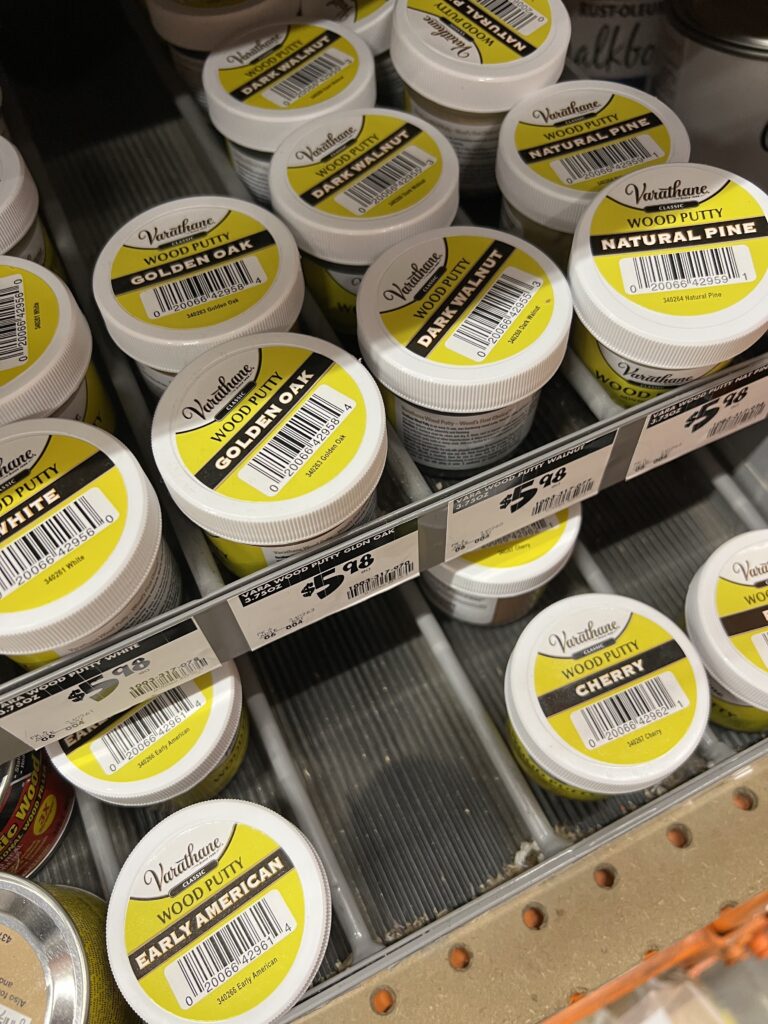
Understanding Wood Filler
Wood filler is a patching product that was designed specifically for wood surfaces. It is made from saw dust/tiny wood particles mixed with a binding agent: epoxy, latex, or cellulose.
Use wood filler to patch flat cracks or gaps in molding. The wood filler does a better job of smoothing flush because it is made to fill in flat gaps and joints on wood.
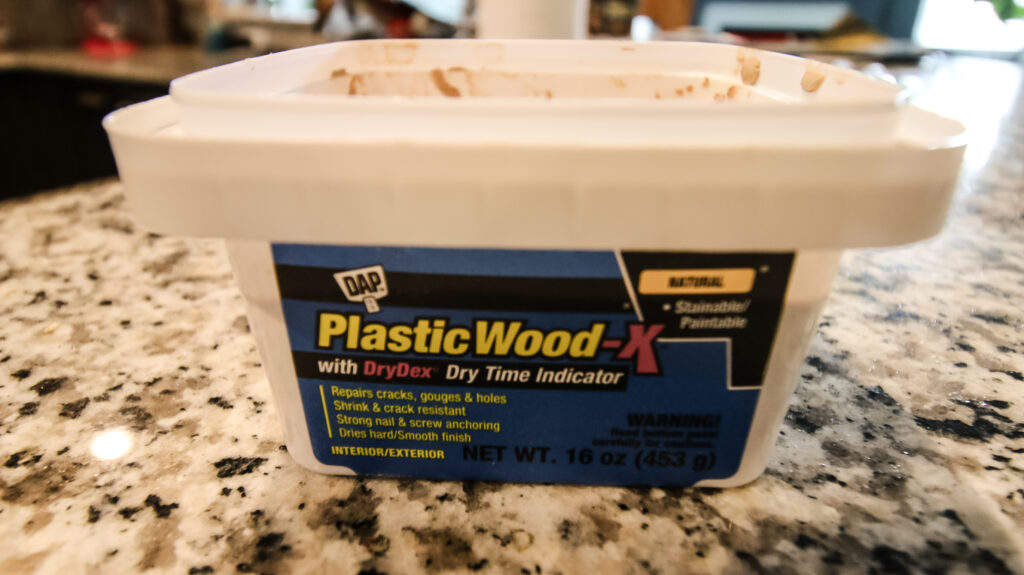
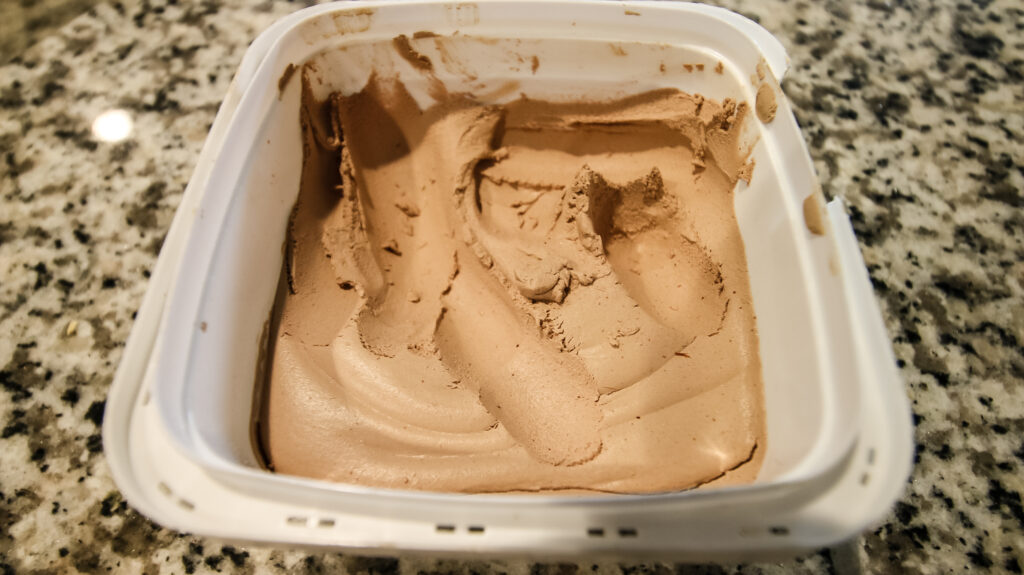
See our 4 favorite wood fillers compared side by side here!
Benefits of Wood Filler
- Ideal for repairing cracks, dents, and gouges in wooden furniture, trim, and flooring.
- Provides a strong bond with wood and is less likely to shrink or crack over time.
- Can be sanded, stained, and painted to blend seamlessly with the surrounding wood.
Types of Wood filler
- Water-Based Wood Fillers: easy to use, environmentally friendly, easy clean up, quick drying, low odor and low VOC
- Solvent-Based Wood Fillers: made with acetone or mineral spirits and very durable, longer dry time, can use outdoors.
- Wood Epoxy Fillers: two part system that has to be mixed. Very stinky. Long cure time. Very strong and weather proof once dry.
Wood filler drying + cure time
- Dry time varies by brand + specific product - always consult your can or bottle for proper dry time.
- In general, water based wood fillers dry quickly, solvent and epoxy based wood fillers dry slower.
- Temperature and humidity levels can effect dry time.
- Cure time is how long it takes wood filler to reach it's maximum hardness. Even if it is dry to the touch, it might not be fully cured.
- Water based fillers cure in a few hours, while others can take much longer. Check the back of the can and be sure your project is cured before handling it!
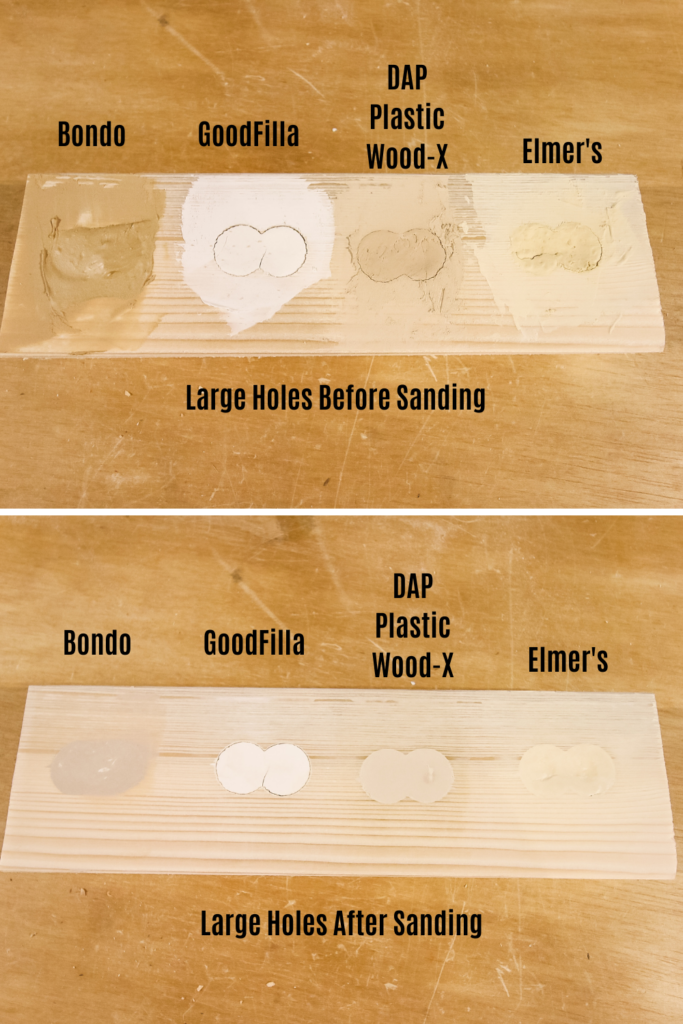
Best Uses of Wood Putty
Wood putty is ideal for:
- Filling small nail holes and shallow surface imperfections.
- Minor touch-ups on finished wood surfaces where perfection is not critical.
- Interior projects.
Best Uses of Wood Filler
Wood filler is best for:
- Repairing larger gaps, cracks, and damage to wood surfaces.
- Molding new edges or corners for tabletops.
- Repairing gouges or gaps in wood floors.
- Preparing wood surfaces for staining, painting, or refinishing.
- Suitable for both interior and exterior wood projects.
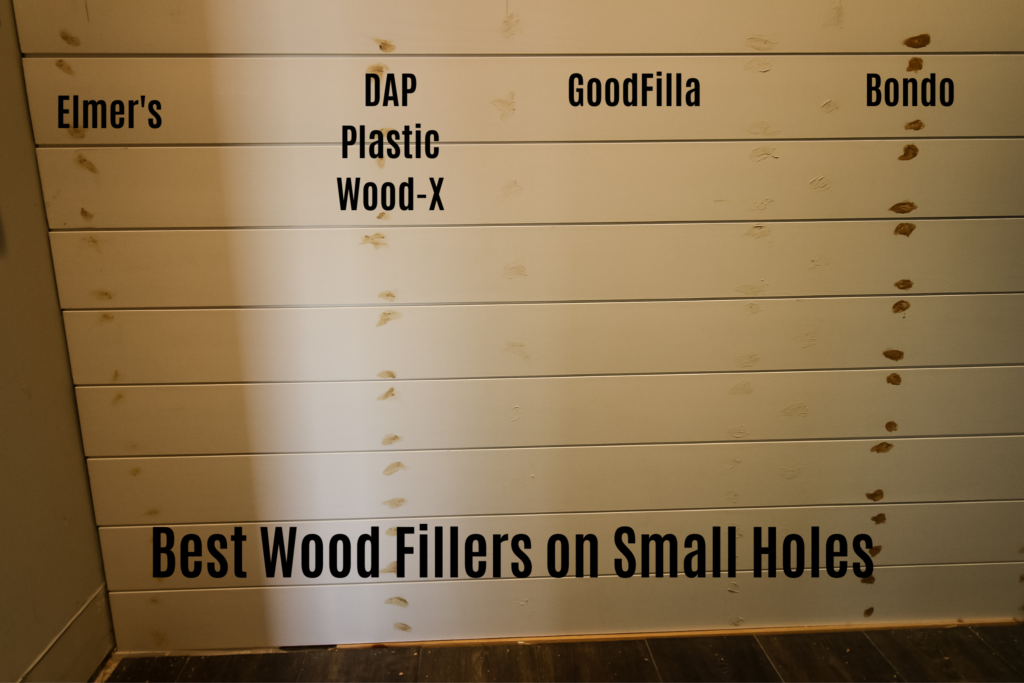
Differences in Application
While these products are very similar, there are some differences in how they are applied.
Wood Putty
Wood putty is easily applied with your fingers or a putty knife. Because it comes pre-mixed in various colors, it's ideal for quick and minor touch-ups in finished woodwork.
Wood putty is not designed for staining or finishing. It's designed to be used as-is, so the color selection is important!
Wood Filler
Wood filler is typically applied with a putty knife or a caulking gun for larger repairs.
It requires ample drying time and usually needs significant sanding for a smooth finish.
But, wood filler can be stained or finished to match the surrounding wood exactly!
Wood filler or Wood putty - which should I use?
Wood putty is easier to use on small cosmetic repairs, especially where you can get a nice match on the pre-mixed colors.
If you have a larger hole to fill, or want to stain your patch to match exactly, you are better off using wood filler.
Any more questions about Wood Putty vs Wood Filler?
Looking for something?
We've been doing this since 2012 so we have a LOT of blog posts!
Search stuff like: Ceiling Projects | DIY Plant Stands | Thrift Flips


Hello, I'm Morgan, half of the creative force behind CharlestonCrafted.com! With a passion for DIY that dates back to 2012, I've transformed three homes and now I'm dedicated to helping others craft their dream spaces. Let's turn your house into a home together!


